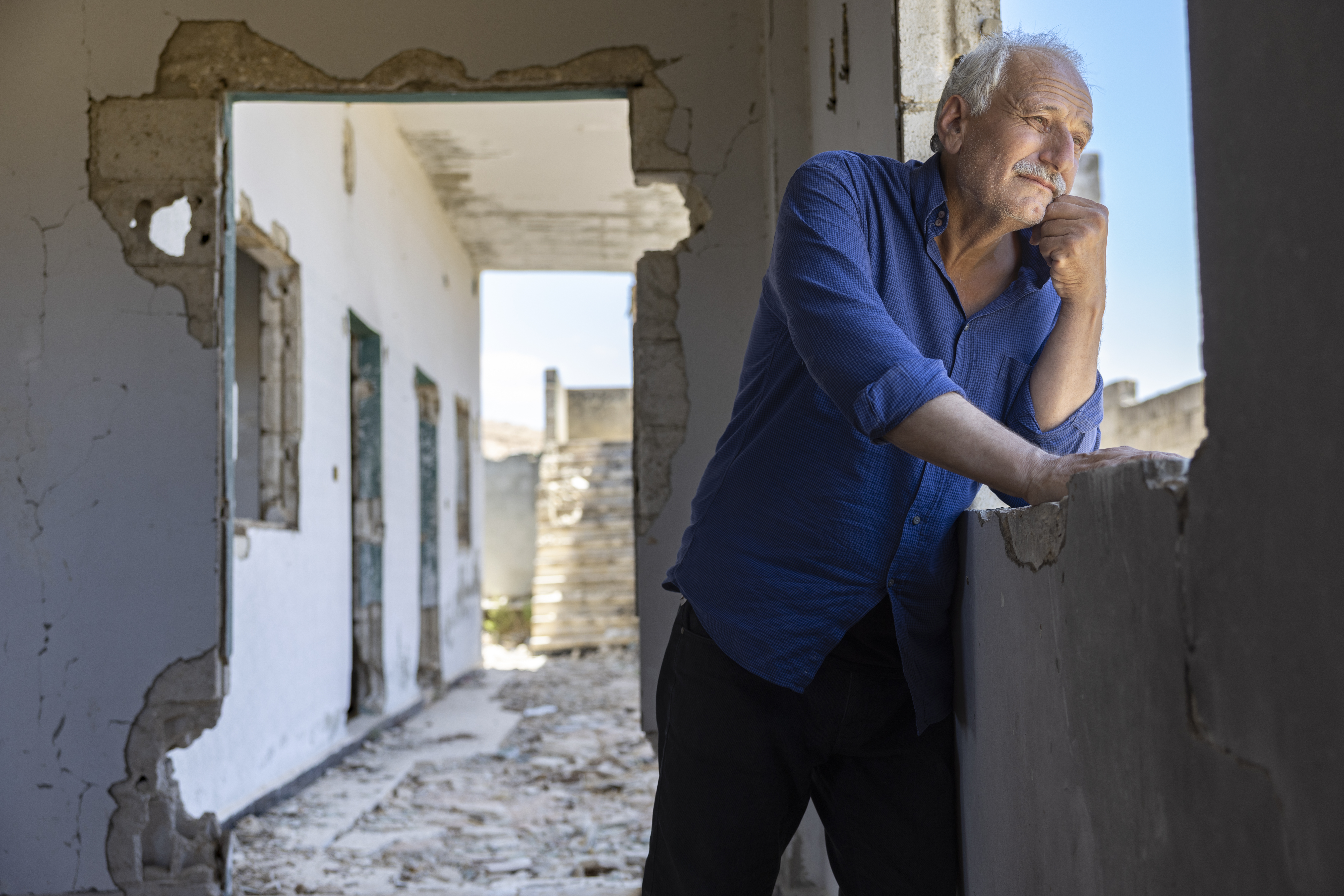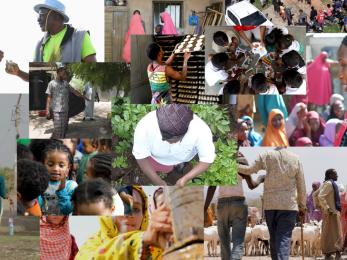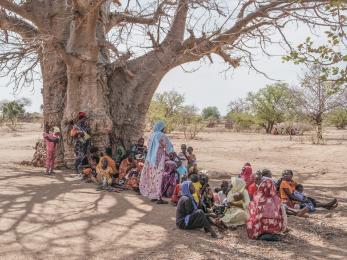How technology is affecting the refugee crisis
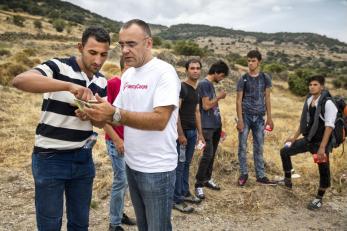
Editor's note: This article was originally published June 9, 2016; it was updated June 18, 2018 to reflect the latest information.
Imagine traveling thousands of miles through unfamiliar, tense and frightening conditions with only the belongings you’re able to carry. You journey by sea or on foot, for days at a time without food, water or much money.
You must keep moving and each new day brings with it new surroundings, new languages and new uncertainty about where to find the basics — a meal, a bed, a bathroom — let alone directions to your next destination.
To make matters worse, you don’t know where many of your loved ones are, or even if they’re OK.
You are desperate, terrified and disoriented: How do you find the information you need to survive?
This agonizing scenario is reality for more than 1.5 million people from the Middle East and Africa who have crossed the Mediterranean Sea since 2014 in an attempt to escape violence, poverty or instability in their countries and find security in Europe.
In recent years, new regulations along highly-trafficked routes through Europe have significantly reduced the number of refugees and migrants arriving on its shores, but people are still taking the risk in hope of finding safety. Nearly 40,000 people have arrived in Greece, Italy and Spain by boat already in 2018.
Around 40 percent of arrivals are refugees fleeing years-long conflicts in Syria, Afghanistan and Iraq, with people from Tunisia, Eritrea, Guinea, Mali and elsewhere in Africa largely forming the rest of the population. These numbers don’t include millions of Syrian refugees who have fled to other countries in the Middle East, including Jordan, Lebanon, Iraq and Turkey.
This exodus of people, who tend to be more educated and have more access to technology than other migrant routes, has spawned a modern migration, one in which technologies like smartphones and the internet have proven to be lifesaving and transformative tools for refugees and humanitarian groups alike.
Why do refugees have smartphones?
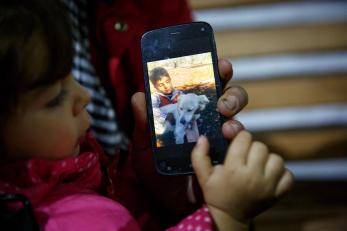
In many places where Mercy Corps works, a basic cellphone can be purchased for under $10, and smartphones, while still expensive, are becoming increasingly more affordable.
Despite the fact that phones and data packages can be costly, refugees and migrants often still invest in them. A mobile phone is not a luxury or supplementary device. More often than not, it’s the primary — or only — way to communicate.
The United States and the United Kingdom had fixed-phone lines long before cellular networks. But “landlines” are expensive to build and maintain.
Mobile networks can be produced for a fraction of the cost of landlines and, accordingly, have completely leap-frogged fixed-line development in many countries. And at a rapid pace.
According to The World Bank, the speed at which mobile phones have been adopted globally is unmatched in the history of technology. To put it in perspective: It took over 100 years for fixed-phone lines to reach 1 billion users; mobile networks reached that number in 20 years.
Today, the International Telecommunication Union reports 95 percent of the global population is covered by a 2G cellular network. The World Bank says the world’s poorest communities are more likely to have access to cellphones than toilets.
According to the mobile phone manufacturer Ericsson, there are 1.44 billion mobile phone subscriptions (unique phone numbers) in the Middle East and Africa. Already 41 percent of those are smartphone subscriptions and that number is expected to increase more than 200 percent over the next five years.
Consider that a portion of this population is now on the run from war, separated from loved ones and traveling by land and sea with little direction or support, and it’s no wonder smartphones are a commodity nearly as precious as food and water.
Mobile technology and the modern refugee
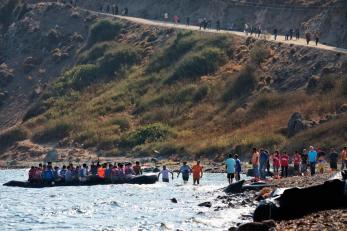
The journey from the war-torn Middle East to western Europe is a harrowing one: People must travel by rubber dinghy, foot, bus, rail and smuggler over uncharted waters and through foreign territories. And as movements have become more restricted, refugees increasingly resort to riskier routes and methods of reaching safety.
Many people have become stuck within closed borders or have been sent back altogether. Others spend weeks or months in camps or reception centers. And they must do it against a backdrop of ever-changing government laws and policies.
In these conditions, staying connected to others is not just reassuring; it’s practical.
Smartphones, Wi-Fi hotspots and other technologies help refugees communicate, find information and stay safe.
This is made possible through free applications like Facebook, Viber, WhatsApp and MAPS.ME, and free Wi-Fi hotspots provided at key locations on migration routes, which eliminate the need for people to pay for expensive data packages and SIM cards in new countries they enter.
How technology is changing aid
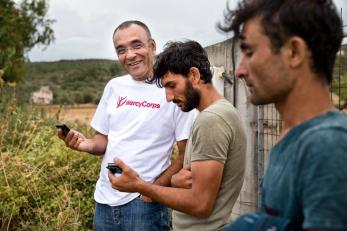
“Technology is not a silver bullet,” says Meghann Rhynard-Geil, Mercy Corps’ technology for development advisor, “but it is an excellent way to scale an information-sharing response, and to be in immediate contact with the people we are helping and working within this context.
“We’re able to go where people are, so to speak, and reach them on the platforms they’re already using — Facebook Messenger, WhatsApp, etc.,” she adds. “Platforms like these offer private, secure ways for people to communicate their needs, challenges and questions.”
In 2015, Mercy Corps — in partnership with the International Rescue Committee, and supported by Cisco, Google, Microsoft and Trip Advisor — developed Refugee.Info, a multilingual informational website for refugees in Europe.
The site originally provided data about services provided on the route through Europe, as well as ferry schedules and costs, bus schedules, border closures and other key information.
As the situation has changed and movements have halted, the program’s content and tools have expanded to provide more information on longer-term support and services available where refugees are settling, like where to find a community center, language classes or legal assistance.
In partnership with NetHope, Mercy Corps has also been supporting Wi-Fi hotspot provision in camps and community centers throughout Greece and the Balkans since 2015. Recently, Mercy Corps expanded its Wi-Fi provision activities into Italy.
Refugee.Info is the first thing people see when they connect to the Wi-Fi hotspots Mercy Corps and many other partners host throughout the region. The site detects the location of the person accessing it and contains content relevant to their area, including conditions or clarifications on laws and policies. People can also use the Wi-Fi hotspots to do anything else they need to do online.
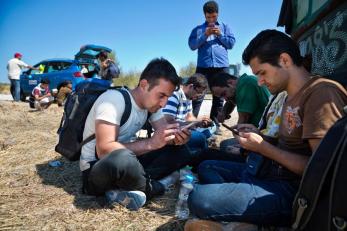
The Refugee.Info program, now a global initiative called Signpost, has been expanded to offer information through four channels, including the website, a mobile app, a blog and social media.
It also now includes service mapping and two-way communication, such as Facebook Live videos or chats in which people can ask questions. Some of the most commonly asked questions are then used to generate additional content.
Recently, a similar resource for Syrian refugees in Jordan — Khabrona.Info — was also launched as part of the Signpost program
Because a lack of access to trustworthy, accurate information can make people more vulnerable to violence or exploitation, programs like Signpost provide timely, credible information about rights, laws and the availability of services to help crisis-affected people regain the power to make safe, informed choices for themselves and their families.
In total, the sites are active and localized for refugees in Greece, Serbia, Bulgaria, Hungary and Jordan, as well as in Italy, where many refugees from Africa are arriving.
The Signpost program has so far reached more than 808,000 people with critical information, with thousands of people visiting the sites every single day. Khabrona.Info has served more than 9,000 refugees in just its first eight months.
Mercy Corps also partners with companies like Microsoft, which works to develop technology-based solutions to support refugees — like improving care with cloud-based humanitarian data or providing digital identities and document storage that help them more easily rebuild their lives.
Learn how Mercy Corps and Microsoft are using technology to transform the Syria refugee crisis ▸
Technology is changing the way other humanitarian organizations respond, too. Essential information can be displayed on video screens at registration centers and border crossings, Skype calls can help humanitarian workers access translators for rarer languages, and digital face recognition applications can help locate missing people.
All this is not to say conventional aid like food, water and medicine isn’t still vital — it is. It just so happens that in this crisis, in particular, technology and information are a powerful and effective means of providing those resources.
The future of tech in humanitarian work
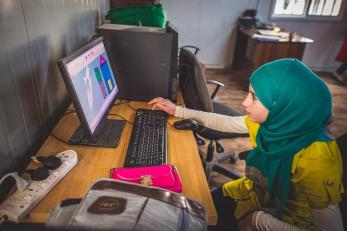
Different technologies are already connecting people all over the globe to the resources they need to survive emergencies and build better lives.
In many of the countries we work in, we use mobile technology to help rural farmers access weather updates, market information and business tools, and we provide remote health clinics with internet access so they can better treat their patients.
We connect families with mobile banking, so they can receive emergency funds and start savings accounts even if they don’t have access to a brick-and-mortar branch, and we use community radio to support widespread information sharing.
And at our youth centers in Jordan, Lebanon and Iraq, young Syrian refugees can take computer classes and develop skills that will prepare them for future job and employment opportunities.
Because installing Wi-Fi hotspots is a low-cost and impactful way of providing information, a way to communicate with loved ones, and a platform to cultivate new networks, this type of intervention will undoubtedly play an increasing role in how humanitarian organizations respond to future crises.
As access to reliable information remains an ever-pressing need for vulnerable populations, especially those on the move, Mercy Corps has worked with partners to develop new partnerships and initiatives, like refugee.info, to integrate information dissemination and communication tools in programs around the world, where fitting.
Information is a lifeline in many of these contexts — a resource just as critical as food, water and shelter — and Mercy Corps is dedicated to adapting our response to meet this need.
